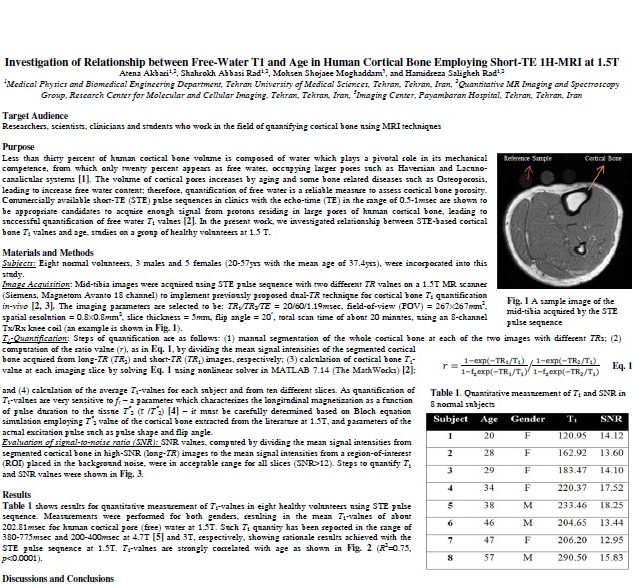Investigation of Relationship between Free-Water T1 and Age in Human Cortical Bone Employing Short-TE 1H-MRI at 1.5T
Abstract
Less than thirty percent of human cortical bone volume is composed of water which plays a pivotal role in its mechanical competence, from which only twenty percent appears as free water, occupying larger pores such as Haversian and Lacunocanalicular systems [1]. The volume of cortical pores increases by aging and some bone related diseases such as Osteoporosis, leading to increase free water content; therefore, quantification of free water is a reliable measure to assess cortical bone porosity. Commercially available short-TE (STE) pulse sequences in clinics with the echo-time (TE) in the range of 0.5-1msec are shown to be appropriate candidates to acquire enough signal from protons residing in large pores of human cortical bone, leading to successful quantification of free water T1 values [2]. In the present work, we investigated relationship between STE-based cortical bone T1 values and age, studies on a group of healthy volunteers at 1.5 T.

